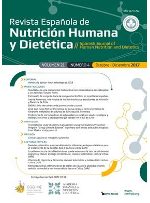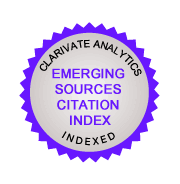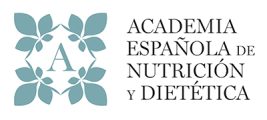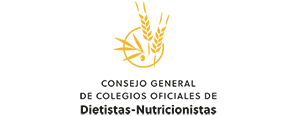Valoración del estado de yodo en adultos: Un estudio de caso de Amasya
DOI:
https://doi.org/10.14306/renhyd.28.3.2227%20Palabras clave:
Yodo, Estado de yodo, deficiencia de yodo, Deficiencia de yodo, yodo en orina, Cloruro de sodio dietético, sal yodadaResumen
RESUMEN
Introducción: La prevalencia de la deficiencia de yodo en Turquía disminuyó significativamente después de la fortificación de la sal de mesa con yodo, pero podrían existir diferencias regionales. El objetivo de este estudio transversal fue evaluar los niveles de yodo entre los adultos residentes en Amasya.
Metodología: Este estudio, que incluyó a 232 adultos de entre 18 y 64 años, se realizó en un hospital público en Amasya. Los datos del estudio se obtuvieron a través de un cuestionario aplicado a los individuos mediante entrevistas cara a cara. Después de recoger la información general y las medidas antropométricas de los individuos que participaron en el estudio, se analizaron los niveles de yodo en la orina.
Resultados: El nivel medio de yodo en orina fue de 13.7±1.5 mcg/dL. El nivel de yodo del 99.6% de los participantes fue normal y el 64.9% de ellos utilizaba sal yodada. El consumo de alcohol y el índice de masa corporal mostraron una diferencia estadísticamente significativa según la clasificación del nivel de yodo en orina (valor mediano). En individuos que consumieron sal yodada, la frecuencia de aquellos con niveles de yodo en orina por encima del valor mediano fue mayor en comparación con aquellos que no la consumieron.
Conclusiones: Este estudio muestra el estado de yodo de los adultos que viven en Amasya. En futuros estudios, también se debe evaluar la ingesta dietética de yodo de los individuos y examinar el estado de yodo en grupos vulnerables como embarazadas, lactantes y ancianos.
Citas
REFERENCES
(1) Zakauskiene U, Macioniene E, Zabuliene L, Sukackiene D, Linkeviciute-Dumce A, Banys V, et al. Sodium, Potassium and Iodine Intake in an Adult Population of Lithuania. Nutrients.2022;14(18). https://doi.org/10.3390/nu14183817
(2) Dahl L, Johansson L, Julshamn K, Meltzer HM. The iodine content of Norwegian foods and diets. Public Health Nutrition.2004;7(4):569-76. https://doi.org/10.1079/PHN2003554
(3) D'Elia L, Obreja G, Ciobanu A, Breda J, Jewell J, Cappuccio FP. Sodium, Potassium and Iodine Intake, in A National Adult Population Sample of the Republic of Moldova. Nutrients.2019;11(12). https://doi.org/10.3390/nu11122896
(4) Krzepilko A, Zych-Wezyk I, Molas JJJoP-C. Alternative ways of enriching the human diet with iodine. Journal of Pre-Clinical and Clinical Research.2015;9(2):167-71. https://doi.org/10.5604/18982395.1186500
(5) Bouga M, Lean MEJ, Combet E. Contemporary challenges to iodine status and nutrition: the role of foods, dietary recommendations, fortification and supplementation. Proceedings of the Nutrition Society.2018;77(3):302-13. https://doi.org/10.1017/S0029665118000137
(6) World Health Organization. Guideline: Fortification of Food-Grade Salt with Iodine for the Prevention and Control of Iodine Deficiency Disorders. WHO; 2014.
(7) World Health Organization. Assessment of iodine deficiency disorders and monitoring their elimination: a guide for programme managers, 3rd ed. WHO; 2007.
(8) Zimmermann MB, Boelaert K. Iodine deficiency and thyroid disorders. The lancet Diabetes & Endocrinology.2015;3(4):286-95. https://doi.org/10.1016/S2213-8587(14)70225-6
(9) Larsen PR, Zavacki AM. The role of the iodothyronine deiodinases in the physiology and pathophysiology of thyroid hormone action. European Thyroid Journal.2012;1(4):232-42. https://doi.org/10.1159/000343922
(10) Bilal MY, Dambaeva S, Kwak-Kim J, Gilman-Sachs A, Beaman KD. A Role for Iodide and Thyroglobulin in Modulating the Function of Human Immune Cells. Frontiers in Immunology.2017;8:1573. https://doi.org/10.3389/fimmu.2017.01573
(11) Gostas DE, Larson-Meyer DE, Yoder HA, Huffman AE, Johnson EC. Dietary Relationship with 24 h Urinary Iodine Concentrations of Young Adults in the Mountain West Region of the United States. Nutrients.2020;2(1). https://doi.org/10.3390/nu12010121
(12) Knowles J, Codling K, Houston R, Gorstein J. Introduction to the programme guidance for the use of iodised salt in processed foods and its pilot implementation, strengthening strategies to improve iodine status. PLoS One. 2023;18(10):e0274301. https://doi.org/10.1371/journal.pone.0274301
(13) Charlton KE, Ware LJ, Baumgartner J, Cockeran M, Schutte AE, Naidoo N, et al. Iodine Status Assessment in South African Adults According to Spot Urinary Iodine Concentrations, Prediction Equations, and Measured 24-h Iodine Excretion. Nutrients. 2018;10(6). https://doi.org/10.3390/nu10060736
(14) Velasco I, Rueda-Etxebarria M, Trak-Fellermeier MA, Taylor P, Bonet MR, Rueda J-R, et al. Iodine supplementation for preventing iodine deficiency disorders in children and adolescents. The Cochrane Database of Systematic Reviews.2023;2023(4):CD014475. https://doi.org/10.1002/14651858.CD014475
(15) Dilek E, Tütüncüler F. The Current Status of Iodine Deficiency Disorders in the World and Turkey. Turkiye Klinikleri Journal of Pediatrics.2016;12(2):7-13.
(16) Farebrother J, Zimmermann MB, Andersson M. Excess iodine intake: sources, assessment, and effects on thyroid function. Annals of the New York Academy of Sciences 2019;1446(1):44-65. https://doi.org/10.1111/nyas.14041
(17) Zimmermann MB, Andersson M. GLOBAL ENDOCRINOLOGY: Global perspectives in endocrinology: coverage of iodized salt programs and iodine status in 2020. European journal of endocrinology.2021;185(1):R13-r21. https://doi.org/10.1530/eje-21-0171
(18) World Medical Association. World Medical Association Declaration of Helsinki: Ethical principles for medical research involving human subjects. JAMA. 2013;310(20):2191-4. https://doi.org/10.1001/jama.2013.281053
(19) Centers for Disease Control and Prevention. Defining Adult Overweight & Obesity. CDC; 2022.
(20) Chen W, Gao S, Guo W, Tan L, Pan Z, Dong S, et al. Intra-individual and inter-individual variations in iodine intake and excretion in adult women: implications for sampling. British Journal of Nutrition. 2020;123(9):987-93. https://doi.org/10.1017/S0007114519003015
(21) Karakaya RE, Saka M, Ozdemir D. Determining the relationship between dietary iodine intake, urinary iodine excretion and thyroid functions in people with type 2 diabetes mellitus. Archives of Endocrinology and Metabolism. 2020;64:383-89. https://doi.org/doi.org/10.20945/2359-3997000000233
(22) Ozpinar A, Kelestimur F, Songur Y, Can O, Valentin L, Caldwell K, et al. Iodine status in Turkish populations and exposure to iodide uptake inhibitors. PLoS One. 2014;9(2):e88206. https://doi.org/10.1371/journal.pone.0088206
(23) Rasmussen LB, Ovesen L, Bulow I, Jorgensen T, Knudsen N, Laurberg P, et al. Dietary iodine intake and urinary iodine excretion in a Danish population: effect of geography, supplements and food choice. British Journal of Nutrition.2002;87(1):61-9. https://doi.org/10.1079/bjn2001474
(24) Soriguer F, Valdes S, Morcillo S, Esteva I, Almaraz MC, de Adana MS, et al. Thyroid hormone levels predict the change in body weight: a prospective study. European Journal of Clinical Investigation. 2011;41(11):1202-9. https://doi.org/10.1111/j.1365-2362.2011.02526.x.
(25) Lecube A, Zafon C, Gromaz A, Fort JM, Caubet E, Baena JA, et al. Iodine deficiency is higher in morbid obesity in comparison with late after bariatric surgery and non-obese women. Obesity Surgery.2015;25:85-89. https://doi.org/10.1007/s11695-014-1313-z
(26) Oguz Kutlu A, Kara C. Iodine deficiency in pregnant women in the apparently iodine‐sufficient capital city of Turkey. Clinical endocrinology. 2012;77(4):615-20. https://doi.org/10.1111/j.1365-2265.2012.04440.x
(27) Hacettepe University Institute of Population Studies. Turkey Demographic and Health Survey, 2008. Hacettepe University Institute of Population Studies, Ministry of Health General Directorate of Mother and Child Health and Family Planning, T.R. Prime Ministry Undersecretary of State Planning Organization and TÜBİTAK; 2009.
(28) TBSA. Türkiye Beslenme ve Sağlık Araştırması. T.C. Sağlık Bakanlığı Halk Sağlığı Genel Müdürlüğü2019.
(29) Alvarez‐Pedrerol M, Ribas‐Fitó N, García‐Esteban R, Rodriguez A, Soriano D, Guxens M, et al. Iodine sources and iodine levels in pregnant women from an area without known iodine deficiency. Clinical Endocrinology.2010;72(1):81-86. https://doi.org/doi.org/10.1111/j.1365-2265.2009.03588.x
(30) Andersson M, Aeberli I, Wust N, Piacenza AM, Bucher T, Henschen I, et al. The Swiss iodized salt program provides adequate iodine for school children and pregnant women, but weaning infants not receiving iodine-containing complementary foods as well as their mothers are iodine deficient. Journal of Clinical Endocrinology & Metabolism. 2010;95(12):5217-24. https://doi.org/doi.org/10.1210/jc.2010-0975
(31) Alparslan Ö, Çıtıl R, Çıtak G. Knowledge and Applications of Women on Iodine Salt Use. International Scientific and Vocational Studies Journal. 2020;4(1):49-59.
Publicado
Cómo citar
Número
Sección
Licencia
Derechos de autor 2020 Cansu Memiç İnan, Mustafa Çapraz

Esta obra está bajo una licencia internacional Creative Commons Atribución-CompartirIgual 4.0.











